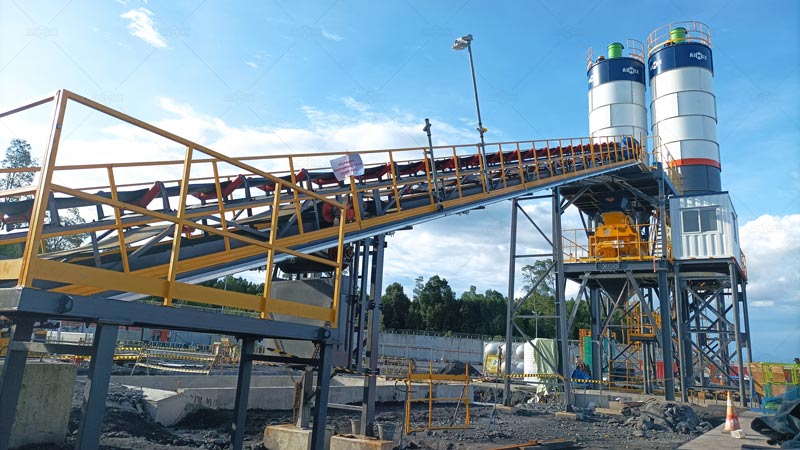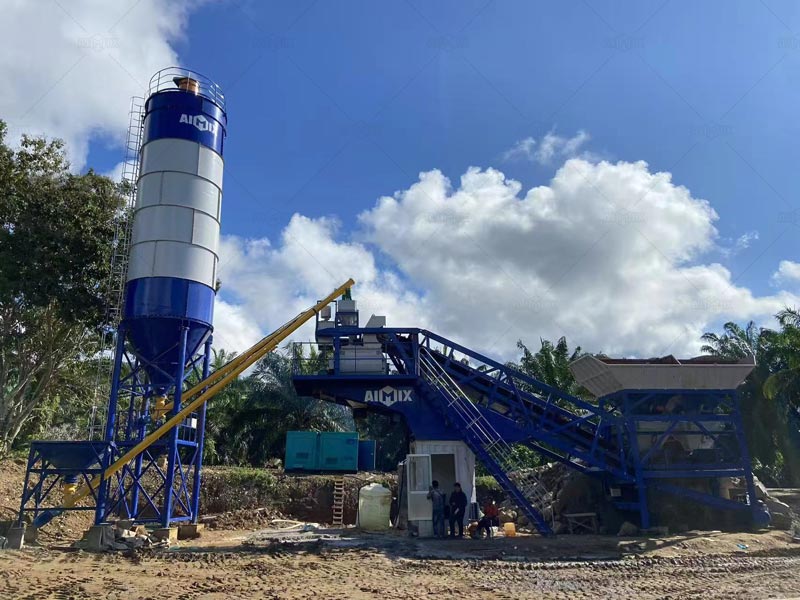Choosing the right concrete plant is not just a technical decision—it’s a financial one. From small-scale startups to major infrastructure firms, understanding return on investment (ROI) helps businesses make smarter capital decisions. Whether you’re evaluating a stationary concrete plant for sale or a highly mobile setup, this article explores how ROI-focused thinking can guide your equipment selection strategy to maximize profitability and long-term performance.
Why ROI Matters in Concrete Plant Selection
In capital-intensive industries like construction and infrastructure, ROI provides a clear measure of how well an equipment investment will perform over time. The formula is simple: ROI = (Net Profit / Investment Cost) × 100%. However, the real value lies in understanding the components that affect both costs and revenue streams over the plant’s lifecycle.
By analyzing ROI during the procurement process, contractors can better align equipment capabilities with actual project demands, thereby avoiding underperformance or overinvestment. A concrete plant for sale(planta de concreto en venta) that appears cheaper upfront may cost more in the long run if it doesn’t match production targets or requires frequent repairs.

Key ROI Factors in Choosing a Concrete Plant
1. Upfront Investment vs. Long-Term Output
The initial cost of a concrete plant for sale can range widely depending on capacity, automation level, mobility, and brand reputation. However, ROI-minded buyers look beyond the price tag. They consider productivity metrics like hourly output, downtime frequency, and maintenance requirements. A slightly higher investment in a more efficient plant may generate significantly better returns over time.
For example, a plant that produces 60 m³/h with 95% uptime will outperform a cheaper 50 m³/h model with frequent breakdowns. The difference in output translates into faster project completion and more revenue.
2. Portability and Project Flexibility
If you’re operating across multiple job sites or working in remote regions, a portable concrete plant(planta dosificadora de concreto portatil) offers greater value. While mobile units can be more expensive upfront, they often reduce setup costs, eliminate delivery delays, and enhance responsiveness to changing job needs—ultimately improving ROI.
In markets like Latin America or Southeast Asia, where infrastructure projects are often spread out geographically, a portable solution enables companies to bid competitively and reuse the equipment across several locations with minimal downtime between jobs.
3. Automation and Labor Savings
Modern plants with integrated automation systems may cost more but reduce labor requirements and improve consistency in mix quality. Automation also minimizes human error, which can lead to rejected batches and material waste. From an ROI perspective, labor savings over just a few months can easily justify the extra initial investment.
Comparing ROI of Different Concrete Plant Types
Stationary Plants
Ideal for high-volume, long-term production at a fixed location, stationary plants offer strong ROI when used at full capacity. They’re best suited for large infrastructure projects or supplying third-party ready-mix demand in urban areas. However, they often require more civil works and utility connections upfront.
Portable Concrete Plants
Portable units excel in project-based scenarios, where mobility, quick setup, and ease of relocation offer a clear advantage. For contractors working on highways, bridges, or rural developments, a portable concrete plant allows for faster return on investment through reduced logistics and higher on-site control.
Hybrid or Semi-Mobile Plants
Some models combine the best of both worlds—modular construction with partial mobility. These can provide good ROI in mid-scale operations where both production stability and moderate flexibility are required.
Maintenance and Lifecycle Costs
One often overlooked factor in ROI calculation is the cost of maintenance, spare parts, and technical support. A lower-quality concrete plant(planta de hormigon) might break down more often, requiring costly repairs and halting production. Reputable manufacturers may offer higher prices but come with better after-sales service, easier access to parts, and longer equipment lifespan.
To ensure accurate ROI evaluation, factor in warranty periods, availability of local service, and expected equipment durability over 5–10 years. Long-term savings in reliability often outweigh the short-term appeal of a low sticker price.

Adapting Plant Size to Project Scope
Purchasing a concrete plant(planta de hormigón en Chile) that is too large can lead to underutilization, while buying one that’s too small may force you to rent or buy a second unit. Carefully evaluate your current and near-future project pipeline to match plant capacity with actual demand. Right-sizing your investment ensures optimal usage and better ROI.
Conclusion: Choose Strategy, Not Just Equipment
From an ROI perspective, selecting a concrete plant should be a strategic decision—not just a technical one. Whether you’re considering a concrete plant for sale to serve a growing urban market or a portable concrete plant to support mobile job sites, the real question is how quickly and effectively that investment can pay for itself.
Evaluating factors like production efficiency, mobility, automation, service support, and expected lifespan helps ensure that your choice delivers sustainable returns. In today’s competitive construction environment, choosing equipment with ROI in mind is not just smart—it’s essential.